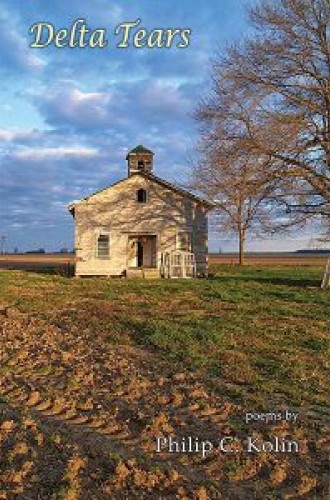What does the Mississippi Delta sound like in verse?
Philip Kolin’s poetry is about juke joints, bluesmen, mosquitoes, ladybugs, race, faith, and more.
The Mississippi Delta, fraught with complications from a tortured history yet drenched in natural beauty, is the focus of a new collection of poems by Philip C. Kolin, a Chicago native and professor emeritus at the University of Southern Mississippi, where he spent his entire academic career. Each poem in this collection reveals that the dust of clay so pervasive in the southern landscape and the river that runs through it have imprinted Kolin’s senses with images of the place that are almost palpable.
“Infinity pauses here,” Kolin writes of the Delta. “Men in pinstripe waistcoats and men / with steel ankles still trying to settle the past / which keeps leaking, appearing too / present to ever be closed” shows that the past is not an illusion. It lives in the present, not only as a reminder but as a substantial force. And the river holds secrets—confessions, suicides, lynchings. It is “the longest tear duct in America.”
Poetry at its best connects with something larger than the self. And Kolin’s poetry, anchored in history, the natural world, and his Catholic faith, challenges the narcissistic murmurings of many of this century’s poets. His poetry is both particular and expansive because he knows that in the individual image lies the universal truth. He zeroes in on characters, personalities, natural phenomena, and what one would expect from a collection of poems about the Delta: racial conflict.
In “The Great Flood of 1927,” a Black man speaks of White landowners escaping downriver while Black men “cried for help / which never came, only the bayonets and / water drowning us as we tried to save / white belongings with our black lives.” In “Who Owns What in Sharecropping,” the narrator describes what Mister Charlie owns. It’s everything, of course: “the land, the seeds, the hoes, shovels, / ploughs and wagons . . . the shacks . . . the tattered clothes . . . the dreams . . . the lynchings.” What the sharecroppers own is “sweat . . . calloused hopes . . . hunger fed with fatback, / boll weevils, floods, rickets, rocks, tornadoes, drought, dust, the debt . . . nightmares . . . and finally wormy pine boxes but not the land they will be lowered in.”
These poems have a visceral quality that forces readers to confront the violence that tears skin and smothers life. Kolin describes the snake of the whip used even on mothers with babies strapped to their backs, called a “cotton kiss” by those who wield it. Emmett Till is here, too, saying, “My casket will always be open,” as are the three young civil rights workers slaughtered by the Klan—and of course all of those who in the past and in our tumultuous present have cried, “I can’t breathe.”
Kolin also shows how this is not just the Delta’s problem. Those who were part of the Great Migration to Chicago discovered that their shackles did not disappear. In the graveyards of the North,
Even in their buried homes these Delta dead felt
the stigma of bigotry, letters and dates peeling off
their cracked tombstones or tin flowers hanging
so low they look like lynching ropes.
“History,” Kolin writes, “was set against even their names surviving.”
He writes of the juke joints, the bluesmen, “the deep down Delta blues” mourning all that has been lost. He writes of the “Three Ladies Blues”—Billie Holiday, Bessie Smith, and Victoria Spivey. Spivey “sings the Christmas blues / for her man who got the first degree / for stealing a hog.” In many ways this entire volume is a blues song, with Delta tears streaming through even the beauties of the landscapes.
Kolin writes of mosquitoes, ladybugs, catfish, crows, and sparrows. He writes of birds “with thousand-year-old passports,” winging from their summer haunts in the Dakotas to the rich offerings of the Delta’s “unfrozen ponds.” He writes of dogs that “drink swamp water and eat field rats.” He describes the seasons—the Delta winter, the spring that decks the Delta “like Eden before the fall,” the deep, dank humidity of the summer.
In short, Kolin creates an entire universe in these few pages of poems—a place for readers to live for a while, to take in the beauty and the agonies and even in the end to visit the shrine of “Mary, Mother of the Delta,” who offers “a hospice of hope.” The scope of this volume is Whitmanesque—an attempt to sing a landscape but not to ignore its brutalities, to speak personally to readers from it, to offer new perspectives on old themes. What comes to mind are the final words of Faulkner’s The Sound and the Fury: “They endured.” Kolin’s poems point to both the valor of those who have endured and the tragedy of that short sentence.






